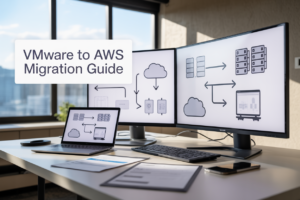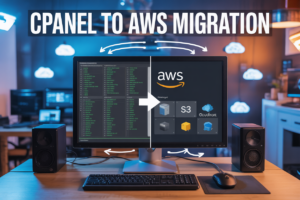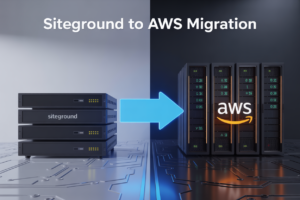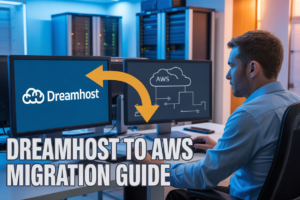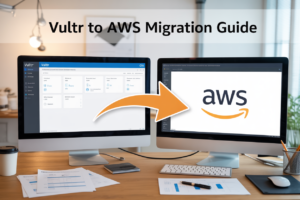Cloud training costs can quickly spiral out of control, but smart budget optimization strategies help organizations get maximum value from their AWS, Azure, and GCP training investments. This guide is designed for IT leaders, L&D managers, and budget-conscious teams who need to develop cloud skills while keeping costs under control.
Rising demand for cloud expertise puts pressure on training budgets, especially when dealing with multiple cloud platforms. Companies often struggle to balance comprehensive skill development with realistic spending limits, making cloud training budget optimization a critical business challenge.
We’ll explore how to maximize AWS training programs through strategic use of free resources and bulk purchasing options. You’ll also discover Azure learning cost management techniques that help stretch your budget across teams while maintaining quality outcomes. Finally, we’ll cover GCP training optimization methods and cross-platform strategies that deliver the best ROI for your cloud skills development initiatives.
Smart planning and the right approach to multi-cloud training strategy can transform your team’s capabilities without breaking the bank.
Understanding Cloud Training Investment Challenges
Identifying Hidden Training Costs Across Multi-Cloud Environments
Organizations often overlook indirect expenses when budgeting for cloud training across AWS, Azure, and GCP platforms. Beyond obvious costs like course fees and certification exams, hidden expenses include employee downtime during training, duplicate content across platforms, and unused sandbox environments. Multi-cloud training strategies frequently result in overlapping subscriptions, underutilized practice labs, and premium support packages that teams never activate. Travel costs for in-person training, extended trial periods that auto-renew, and team coordination overhead add unexpected budget pressure. Companies typically underestimate the cumulative impact of these ancillary costs by 30-40%.
Analyzing ROI Gaps in Traditional Cloud Education Approaches
Traditional cloud training approaches create significant ROI gaps that drain enterprise cloud training costs without delivering measurable business value. Generic certification paths often misalign with specific organizational needs, leading teams to acquire broad theoretical knowledge while lacking practical skills for real-world implementations. Vendor-agnostic training programs frequently provide surface-level coverage across platforms without deep expertise in any single environment. Sequential learning models delay skill application, reducing knowledge retention and extending time-to-productivity. Many organizations invest heavily in cloud certification budget planning without establishing clear performance metrics, making it impossible to track actual skill development ROI or validate training effectiveness.
Recognizing Budget Waste from Unused Learning Resources
Purchased learning resources frequently become budget black holes when organizations fail to implement proper utilization tracking. Enterprise teams commonly acquire comprehensive training packages, premium video libraries, and hands-on lab subscriptions that remain largely untouched after initial enthusiasm wanes. Bulk licensing deals for cloud training platforms often exceed actual team capacity, resulting in significant per-seat waste. Organizations typically purchase multiple competing resources without consolidating learning paths, creating redundancy that fragments focus and dilutes investment value. Unused virtual machine credits, expired certification vouchers, and dormant practice environments represent common areas where cloud skills development ROI suffers from poor resource management and lack of accountability.
Assessing Skills Misalignment with Business Objectives
Skills misalignment represents one of the most costly aspects of cloud training investment strategies, often resulting from disconnect between training programs and actual business requirements. Teams frequently pursue popular certifications that don’t match organizational technology stacks or strategic initiatives. Generic AWS, Azure, and GCP training programs may cover broad platform features while neglecting specific services critical to company operations. Training decisions made without input from project managers and business stakeholders often produce technically competent but strategically irrelevant skill sets. Regular skills gap assessments help identify whether current multi-cloud training strategy aligns with upcoming projects, ensuring training investments directly support business objectives rather than building impressive but unused capabilities.
Maximizing AWS Training Program Benefits
Leveraging AWS Free Tier Learning Resources for Cost Reduction
AWS Free Tier provides substantial cost savings for teams starting their cloud training journey. The platform offers 12 months of free access to EC2 instances, S3 storage, and RDS databases, allowing hands-on practice without budget constraints. Teams can complete foundational courses, labs, and certifications while building real-world projects. Smart organizations schedule intensive training periods during the free tier window, maximizing learning outcomes before transitioning to paid resources.
Optimizing AWS Credits Through Educational Partnerships
Educational institutions and training partners often receive AWS promotional credits ranging from $1,000 to $100,000 annually. Companies can partner with universities or AWS-approved training providers to access these credit pools for employee development. Many organizations establish partnerships with local colleges, creating mutually beneficial programs where employees teach part-time while accessing educational discounts. Corporate training programs can also qualify for AWS Educate credits when structured as educational initiatives.
Utilizing AWS Skill Builder’s Pay-as-You-Learn Model
AWS Skill Builder revolutionizes cloud training budget optimization through its flexible pricing structure. Individual subscriptions cost $29 monthly, while team subscriptions offer significant per-user discounts for groups over 25 learners. The platform includes over 500 courses, hands-on labs, and practice exams without additional charges. Organizations can pause subscriptions during low-activity periods and reactivate when needed, creating substantial savings compared to traditional fixed-term training contracts.
Capitalizing on Volume Discounts for Enterprise Teams
Enterprise customers with 100+ users can negotiate substantial discounts on AWS training programs. Volume pricing often reduces per-seat costs by 30-50% compared to individual purchases. AWS offers dedicated customer success managers for large accounts, providing customized training paths and budget planning assistance. Companies can bundle certification vouchers, instructor-led training, and digital resources into comprehensive packages, achieving better overall value while streamlining procurement processes across multiple business units.
Strategic Azure Learning Cost Management
Harnessing Microsoft Learn’s Comprehensive Free Content
Microsoft Learn offers an extensive library of free Azure training materials that can dramatically reduce your Azure learning cost management expenses. The platform provides hands-on learning paths, interactive modules, and sandbox environments that eliminate the need for expensive third-party training resources. Role-based learning paths guide teams through specific job functions like Azure Administrator, Developer, or Solutions Architect, ensuring targeted skill development without wasteful spending. The integrated Azure sandbox allows unlimited practice with real Azure services at zero cost, making it perfect for experimenting with complex scenarios. Teams can access certification preparation materials, practice assessments, and documentation all in one centralized location. Regular content updates ensure your training stays current with the latest Azure features and services.
Maximizing Azure Student Benefits and Academic Programs
Azure for Students provides $100 in free credits annually, plus access to free Azure services without requiring a credit card. Academic institutions can leverage Azure Dev Tools for Teaching, which grants access to professional development software and Azure credits for classroom use. Students and educators receive significant discounts on Azure certifications, often reducing exam costs by 50% or more. The GitHub Student Developer Pack includes additional Azure credits and premium development tools that complement Azure training. Educational partnerships with Microsoft often provide bulk licensing agreements that further reduce per-user training costs. Faculty can access specialized training resources and curriculum guides that streamline course development and reduce preparation time.
Implementing Azure DevTest Labs for Hands-on Practice Savings
Azure DevTest Labs creates cost-controlled environments for hands-on training without the risk of unexpected billing surprises. Set automatic shutdown schedules to prevent resources from running overnight, which can save up to 70% on compute costs during training periods. Configure spending limits and quotas per user or team to maintain strict budget control while allowing realistic practice scenarios. Template-based virtual machine deployment ensures consistent training environments across all participants while minimizing setup time and costs. Policy enforcement automatically applies cost-saving measures like VM size restrictions and storage limits across all lab resources. Integration with Azure Resource Manager templates allows teams to quickly deploy complex multi-service scenarios for advanced training exercises without manual configuration overhead.
Google Cloud Platform Training Optimization Strategies
Exploiting GCP’s Qwiklabs Credit System for Practical Learning
Qwiklabs offers hands-on labs with temporary GCP environments using credit-based pricing. Organizations can purchase credits in bulk at discounted rates, then distribute them strategically across teams. Advanced labs cost 5-10 credits while foundational courses require 1-3 credits. Smart allocation involves prioritizing high-value certifications and rotating access among team members to maximize learning opportunities while controlling GCP training optimization costs.
Accessing Google Cloud Skills Boost Free Learning Paths
Google Cloud Skills Boost provides dozens of free learning paths covering fundamental to advanced topics. These structured courses include videos, documentation, and quizzes without lab costs. Focus on paths aligned with business objectives like data engineering, machine learning, or security. Teams can complete theoretical foundations here before investing credits in practical Qwiklabs exercises, creating an efficient cloud training budget optimization strategy.
Leveraging Google for Education Partnerships
Educational institutions and training organizations often receive substantial GCP credits through Google’s academic programs. Partner with local universities, coding bootcamps, or certification providers who have access to these educational benefits. Many institutions offer public workshops or corporate training sessions at reduced rates. This approach can cut training expenses by 40-60% while providing access to certified instructors and structured learning environments.
Utilizing GCP Free Tier for Long-term Skill Development
GCP’s Always Free tier includes compute instances, storage, and networking resources perfect for ongoing skill development. Create personal learning environments using f1-micro instances, Cloud Storage, and BigQuery sandbox. Team members can practice configurations, test deployments, and experiment with services without impacting training budgets. Combine free tier resources with documentation and community tutorials to build practical experience cost-effectively over extended periods.
Cross-Platform Budget Allocation Strategies
Creating Multi-Cloud Learning Pathways for Maximum Value
Smart organizations design multi-cloud training strategy pathways that leverage overlapping skills across AWS, Azure, and GCP platforms. Focus training budgets on foundational concepts like containerization, serverless computing, and DevOps practices that translate across all three cloud providers. This approach maximizes your cloud training investment strategies by building portable skills while reducing redundant certification costs. Create learning tracks that start with platform-agnostic fundamentals before branching into vendor-specific advanced features, ensuring every dollar spent builds transferable expertise that benefits your entire cloud infrastructure.
Implementing Skills-Based Budget Distribution Models
Allocate cloud training budget optimization resources based on actual job roles and skill gaps rather than platform preferences. Data engineers need different training investments than security architects or DevOps specialists. Map your team’s responsibilities to specific competencies across AWS, Azure, and GCP, then distribute budgets proportionally. Security-focused roles might get 40% AWS training, 35% Azure, and 25% GCP based on your infrastructure mix. This targeted approach prevents wasteful spending on irrelevant certifications while ensuring critical skills gaps get proper funding allocation for maximum business impact.
Balancing Vendor-Specific vs Platform-Agnostic Training Investments
Strike the right balance between deep vendor expertise and broad cloud knowledge by following the 70-30 rule for enterprise cloud training costs. Invest 70% of budgets in vendor-specific training for platforms you actively use, focusing on advanced features and specialized services. Allocate the remaining 30% to platform-agnostic training covering cloud architecture principles, security frameworks, and industry best practices. This strategy builds both tactical skills for immediate productivity and strategic knowledge for future platform decisions, optimizing your cloud skills development ROI while maintaining flexibility in an evolving multi-cloud landscape.
Measuring Training Investment Success
Establishing Cloud Competency Metrics That Drive Business Value
Effective measurement starts with defining specific metrics that align with your organization’s goals. Track certification completion rates, skill assessment scores, and time-to-competency for different cloud platforms. Monitor project delivery timelines, system performance improvements, and cost savings achieved through optimized cloud architectures. Establish baseline measurements before training begins and create quarterly reviews to assess progress across your multi-cloud training strategy.
Tracking Certification ROI Across Different Cloud Platforms
Calculate the direct financial impact of each certification by comparing pre- and post-training project outcomes. AWS certifications typically show ROI through reduced infrastructure costs and faster deployments. Azure certifications often demonstrate value through improved hybrid cloud implementations and security posture. GCP certifications frequently deliver returns via enhanced data analytics capabilities and machine learning implementations. Track salary improvements, promotion rates, and billable hour increases for certified team members to quantify your cloud training investment strategies.
Monitoring Post-Training Project Implementation Success Rates
Success measurement extends beyond certification completion to real-world application. Monitor the percentage of trained employees who successfully implement learned skills within 90 days of completing programs. Track project failure rates before and after training investments, focusing on cloud migrations, infrastructure deployments, and application modernization initiatives. Measure customer satisfaction scores for cloud-based solutions delivered by newly trained teams. Document knowledge transfer rates and peer mentoring activities to assess the broader impact of your cloud training budget optimization efforts across the organization.
Cloud training doesn’t have to drain your budget when you know how to work with the big three providers. AWS, Azure, and GCP each offer unique training programs, free credits, and certification paths that can dramatically cut your learning costs. The secret is mixing and matching these resources while keeping track of what actually moves the needle for your team’s skills and your business goals.
Smart companies treat cloud training like any other investment – they measure results and adjust their spending accordingly. Start by mapping out your team’s current skills, then use the free tiers and promotional credits from all three platforms to get maximum hands-on experience. Track which certifications lead to real productivity gains, and don’t be afraid to shift your budget toward the platforms that deliver the biggest impact for your specific use cases.











